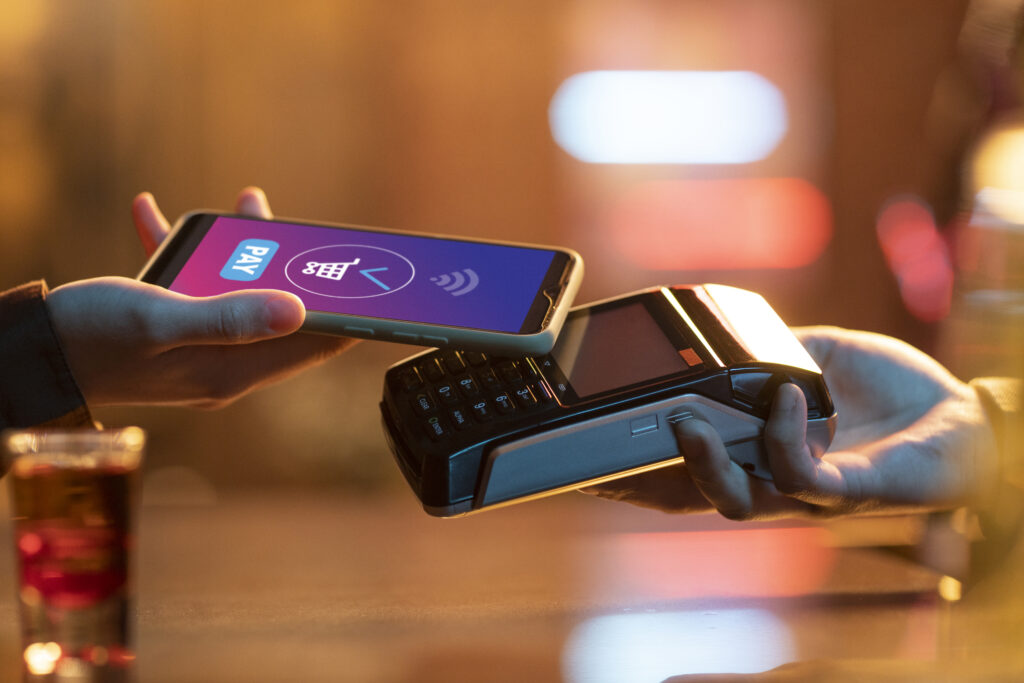Digital banking has completely transformed the ways in which customers and businesses interact with money. The experience of banking has changed from simply being able to access an online account, to a completely different and better experience for financial behaviours. Digital banking is not about faster banking transactions in 2025, the rollout of digital banking represents a very different world of banking where banking has become embedded into their everyday lives through digital apps, online accounts and product bundles to meet their payment, loan, investment and broader financial behaviours all online.
The rapid move to digital banking from India into the rest of the world brings with it significantly better experiences for customers as they enjoy ease and effortless access to their money, 24/7 whenever they want it whilst banks are reducing operational costs, reaching more customers and using data to base their decisions on. This shift towards digital banking is only going to accelerate. The technology at the heart of the banking sector being transformational, including artificial intelligence, blockchain and digital (only) banking units (DBUs), means services will be secure, personalized and highly convenient. Digital banking is not optional, it is woven into banking in 2025.
Key Highlights of Digital Banking in 2025
- 24/7 account access via mobile apps and online portals.
- AI-driven personalisation and instant payments rank among the fastest-growing banking innovations.
- Open banking and APIs drive collaboration between banks and fintech companies.
- Enhanced security frameworks and regulations sustain consumer trust.
- Data-driven strategies and customer-first design are now the markers of competitive banks.
What Digital Banking Means in 2025
The modern digital banking ecosystem extends far beyond simple apps or internet portals. It now incorporates AI, blockchain, cloud solutions, and embedded finance. However, technological advancement alone is not enough—success requires aligning innovations with customer behaviour, regulatory frameworks, and regional market needs.
Market Growth Outlook
According to Statista, by 2025, global digital banking net interest income is projected to reach USD 1.50 trillion. Growing at nearly 6.9% annually, this figure may touch USD 2.09 trillion by 2029—evidence of how quickly digital banking has become a cornerstone of global finance.
Key Digital Banking Trends in 2025
1. Artificial Intelligence and Machine Learning
Financial institutions are using AI and machine learning to provide predictive capabilities, monitor for fraud in real time, and enhance the customer experience. AI and machine learning enhance efficiency, eliminate many manual processes, and create hyper-personalized products that integrate into individual spending patterns and life changes
2. Blockchain Technology
The rise of blockchain will create new ways to securely and transparently exchange value. Usage includes smart contracts, enhancing cross-border payments, and expanding KYC processes. This modern technology is creating trust and reducing fraud, particularly in populations that have adopted technology
3. Open Banking
Open banking is about the power of the customer over their financial information. Calling on customer permission, third-party providers can access data through open APIs that will create more competition, innovation, and tailored products. The openness of banking has evolved further in the UK and EU with the implementation of PSD2 regulation (and will quickly be making its way to other regions)
4. Biometric Authentication
Facial recognition, voice ID, and fingerprint scanning are quickly becoming mainstream. Not only do biometrics enhance security levels, but they streamline login processes and reduce the onus on customer-created passwords.
5.Embedded Financing
Financial services are being more and more incorporated into non-financial platforms. Retailers, travel companies, and even health care providers incorporate payment, insurance, and lending into their apps. For example, Indian applications, like Ola, already embed loans, insurance, and wallet services in relation to their transport offerings.
6.Digital Banking Units (DBUs)
Digital Banking Units are changing the landscape of financial inclusion by acting as fully digital branches in underserved areas. DBUs could offer paperless account opening, remote support, and digital lending capability, providing the opportunity for rural and semi-urban populations to access formal banking sources at a lower cost.
7.Central Bank Digital Currencies (CBDCs)
Over the past year, more than 100 central banks have either tested or are poised to launch digital currencies. India’s e-Rupee and China’s Digital Yuan are leading the way in establishing parameters for how digital currency which could be backed by a central bank could change payments, auditing, and cross-border trade
8.Hyper-Personalized
Data analytics and AI have emerged whereby banks can be the “Netflix of finance” as banks can now upload customized options for products, loans, or investment plans based on spending patterns, financial objectives, and life stages.
9. Digital Wallets and Contactless Payments
The rise of wallets like Amazon Pay, HDFC Pay, and ICICI Pay points to the speed and contactless transaction preferences of millennial and Gen Z consumers, and these will surely accelerate as the digital-first generations increase
10. Cloud-Based Banking
. Using the cloud provides local banks the ability to scale more rapidly, more efficiently aggregate and process large quantities of data, and reduce infrastructure costs. Cloud-enabled banking platforms also facilitate greater service innovation and speed to market.
Key Strategies for Banks in 2025
- Segment by Age: Implement user-friendly products for your younger clientele paired with lethal secure but easy to use channels for your older clientele.
- Adapt by Region: Adapt by local needs. A solution that works well in the UAE will not work in Germany.
- Learn from Fintechs: Established banks should borrow the fintech models that incorporate other lifestyle services – like car sales or gift cards offered on some of Poland’s banking apps.
The Boom in Digital Payments
Global digital transactions are on a fast path to reach more than USD 8.5 trillion by 2025. The growth has shown us how quickly consumers and businesses can shift towards cashless ecosystems. Digital banking infrastructure has become an essential need for all banks.
Why Security Is Still King
Nothing grows without risk. Cyber attacks, data events, and frauds are increasing. We are investing heavily in cybersecurity and blockchain to ensure security and trust. We are investing heavily in encryption and multi-bio authentication, fraud detection and AI systems, because customers have every right to feel confident that their credentials and financial information stays safe and secure.
The Role of Digital Banking Units in Inclusion
DBUs are especially significant in emerging markets like India; they provide a connection for the unbanked to connect through account openings, small loans, and transaction options (either at mobile kiosks or through a mobile app). DBUs also reduce the cost of banking by removing the need to have a physical branch and large staff to service clients.
Banking Efficiency Through AI
AI solutions are significantly improving and streamlining compliance, documentation, and operating processes; reduction in turnaround time is almost two-thirds. In other words, banks are being able to service larger numbers of customers, faster, while reducing their costs.
Three Defining Trends of 2025
- AI in Banking: Hyper-personalised services facilitated by AI.
- Mobile and Digital Wallet Growth: Gen Z and millennials spur adoption of UPI, wallets & contactless payments.
- CBDCs/Blockchain: To enhance transparency, security and speed for the global bank experience.
The Advantages of Digital Banking
- Customers benefit from:
- Unlimited access to their account,
- Expedited payments and transactions,
- Customized services and financial advice.
For banks:
- Lower costs of operations,
- Access to a broader base of customers without opening a physical location,
- Greater ability to make informed, data-based decisions, and
- Strengthened fraud prevention via new security technologies.
Preparing for the Future: Training and Development
In sustaining this rapidly changing environment, banks must also prepare their employees. Organizations like the ebullient offer training for banking professionals on:
Best practices for cybersecurity– How to protect platforms, minimize fraud, and safeguard data on customers,
Compliance with regulations– How to comply with digital banking standards in their home country and abroad, and
Customer service design– How to design services in a way that puts the customer first, ensuring all services are easy to navigate, personalized, and mobile-first.
With confidence in software tools and developments, banking professionals will be better positioned to adapt to market needs and customer demands.
Final Thoughts
Digital banking in 2025 is not an emerging trend, it is the monetary foundation on which modern banking is erected. The future belongs to those who can combine AI, blockchain, cloud, customer first design, unyielding levels of security and trust. From Digital Banking Units (DBUs) aiding in closing the gaps to financial inclusion, to hyper-personalised experiences driven by AI – we are stepping into a reimagination of banking methodologies.
Ebullient firmly believes the banks who not only embrace these digital movements will become the relevant banks, but also the banks leading the charge towards the financial revolution. The winners of tomorrow are those institutions hardest at work innovating today – providing smarter, safer, and more inclusive digital ecosystems for their customers.
FAQs on Digital Banking Trends 2025
1. What are the key digital banking trends in 2025?
AI, blockchain, digital wallets, open banking, DBUs, and hyper-personalisation are the top trends reshaping banking in 2025.
2. How is AI used in digital banking?
AI helps banks personalise services, detect fraud in real-time, predict customer needs, and improve overall customer experience.
3. What is the role of blockchain in banking?
Blockchain improves security, reduces fraud, enables smart contracts, and makes cross-border payments faster and more transparent.
4. What are Digital Banking Units (DBUs)?
DBUs are full-service digital branches, often in rural or underserved areas, that offer paperless account opening, loans, and digital transactions.
5. Why is security important in digital banking?
With rising cyber threats, banks use biometrics, multi-factor authentication, and encryption to ensure safe and secure transactions.



